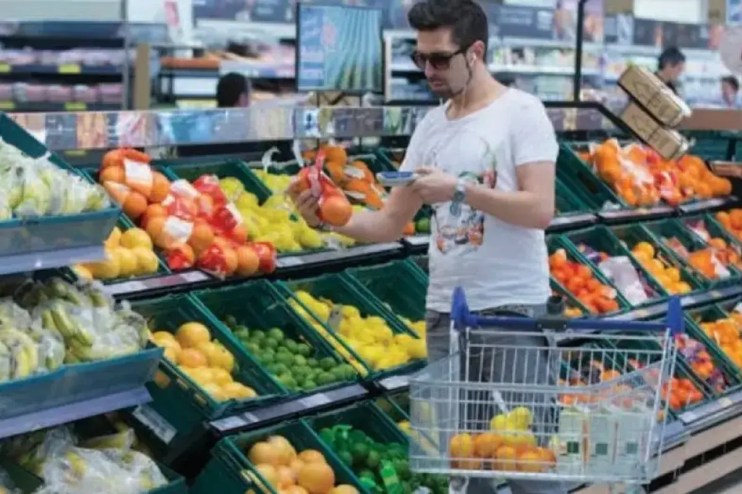The ‘battle for value is on’ at UK grocers as supermarkets push discounts

Higher spending at supermarkets over the last month has been driven by sales of discounted goods as grocers compete to bring financially-stretched customers through their doors, according to fresh data.
Grocery price inflation increased slightly to two per cent during the four weeks to 29 September, up from 1.7 per cent last month, according to the latest data from Kantar.
Take-home sales at the grocers grew by two per cent over the same period.
Despite the annual rate of grocery inflation growing, the contest between the grocers to attract shoppers through their doors has seen prices roll back on some essentials, Kantar said.
Spending on discounted goods climbed by 7.4 per cent in September as households sought to manage their finances. Full-price sales ticked up by 0.3 per cent.
“In the fiercely competitive retail sector, the battle for value is on. Supermarkets are doing what they can to keep costs down for consumers and thanks to their efforts the prices in some categories are falling,” Fraser McKevitt, head of retail and consumer insight at Kantar, said.
“With spending still stretched, people are having to make decisions about what they can afford, with more consumers reporting that they are struggling to balance environmental concerns with their own financial worries,” he added.
Discounting is increasingly widespread
Supermarkets aren’t the only shops to have relied on discounting to attract customers recently.
In retail, goods have been discounted for months, with lower-than-hoped-for retail volumes causing shops to turn to price cuts to boost sales.
In September, discounting led to a 4.7 per cent rise in total retail sales, but analysts warned about retailers’ margins being squeezed.
“These sales figures may appear positive at first glance, but they show clear issues for the sector as we approach the most critical time of year,” Sophie Michael, head of retail and wholesale at BDO, said. “It simply isn’t sustainable.”
The increase in demand for discounts may be partially due to a drop in consumer confidence as Brits’ fears of economic malaise increase.
According to GfK’s latest consumer confidence measure, sentiment plummeted to -20 from -13 in August, the lowest level since March.
Fewer consumers felt positive about their own financial position in September compared to August, and many reported being less likely to make large purchases.
How did the supermarkets fare individually?
Britain’s biggest supermarket Tesco achieved its largest share since December 2017, according to Kantar.
It took 28 per cent of the market, up from 27.4 per cent one year ago. Sainsbury’s sales increased by 5.1 per cent, with its market share up 0.4 percentage points to 15.2 per cent.
Asda’s share of the market dropped once again amidst well-documented troubles at the grocer, with its market share down 1.1 percentage points year on year to take 12.6 per cent of the market.
Ocado was the fastest-growing grocer for the eighth month running, with sales up by 10 per cent over the latest 12 weeks.
Sales at Aldi, Britain’s fourth largest retailer, account for 9.8 per cent of spending at the grocers, while sales at Lidl represented 8.8 per cent of the market.
Morrisons made up 8.6 per cent of the market, unchanged year on year, while Waitrose had a share of 4.6 per cent.
The overall online market expanded by 3.5 per cent over the 12 weeks to reach a value of £3.7bn, with over a fifth of households shopping online, according to Kantar.
